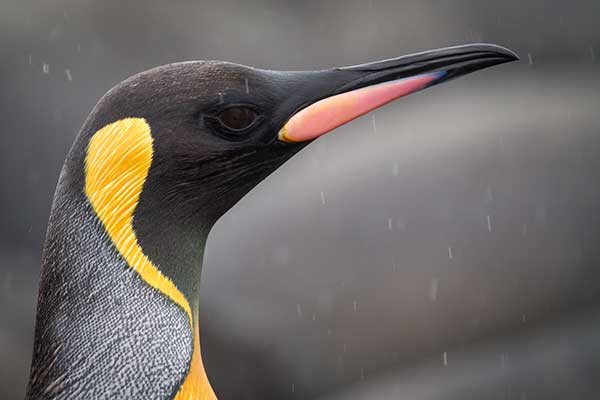Week of Events
Marta’s Marsh
Marta's Marsh hosts a wide variety of bird species and provides great viewing opportunities. Typically, shorebirds, ducks, gulls, terns, and some of Marin's only endangered Ridgway's Rails can be seen at this Marin birding hotspot. We will take a short walk alongside San Clemente Creek to the creek mouth where it then enters the bay. Some of our target birds include Blue-winged Teal, Ridgway's Rail, Dunlin, Western and Least Sandpiper, and the possibility of encountering raptors such as Osprey, Peregrine Falcon, and Northern Harrier. We will time our walk to put us at the creek mouth a few hours after low tide, as the incoming tide causes sandpipers, gulls, and ducks to fly from the bay mudflats to the high tide refuge at Marta’s Marsh. As we walk, we will listen for rails as well as any other migrants that we may run into. The fennel patches and grassy areas surrounding the marsh can also be productive for a variety of sparrow and warbler species. At the mouth of the creek we will scope the bay looking for ducks like Lesser and Greater Scaup, Bufflehead, Wigeon, and possibly Canvasback or Redhead. Heavy rain cancels. Bring binoculars and, if you have one, a spotting scope. There are no restroom facilities in the marsh. Directions: From Hwy 101, take Exit 449A at Tamalpais Drive in Corte Madera; go east 0.2 mile toward the bay; turn right at the Home Consignment Store and go 0.4 mile on San Clemente Drive; make the first left onto Harbor Drive for 0.2 mile; turn right onto Yolo Street for 400 feet. Then turn left onto Channel Drive. We will meet where the road dead ends at the marsh.
Beginning Birding at McInnis Park
Once again, Carol is leading her first trip as a birding field trip leader. (She unfortunately had the flu last month and couldn't complete her official first trip.) She is enrolled at the San Francisco Master Birding Course offered by the California Academy of Sciences, which includes scientific training and at least 100 volunteer hours. Any and all beginning birders are encouraged to join her on this very leisurely stroll around a soccer field at McInnis Park and along the path adjacent to Gallinas Creek. We can expect to see Western Bluebird, Black Phoebe, Say's Phoebe, Chestnut-backed Chickadee, Yellow-rumped Warbler, and more around the soccer field. On our stroll along the creek channel, we hope to see fall migratory waterfowl such as Ring-necked Duck, Northern Pintail, Northern Shoveler, and, of course, our usual residents such as Great and Snowy Egret, Great Blue Heron, and Greater Yellowlegs. We'll also look for sparrows foraging on the ground and raptors soaring overhead. Wear sturdy shoes, dress in layers, and bring water, binoculars, scopes, and your birding enthusiasm! Heavy rain cancels. Directions: We will meet at McInnis Park. From Highway 101, take the Smith Ranch Road exit east toward McInnis Park. We will meet at the first parking lot to the right after you enter McInnis Park. There is plenty of parking available.
Jean and John Starkweather Shoreline Park Bird Walk
Join Rich for an easy bird walk on level ground during a high tide. We will bird the shoreline of San Pablo Bay watching for shorebirds on the rocks and diving ducks, loons, and grebes on the bay. We will also look for the Puget Sound variety of White-crowned Sparrow. Bring your scope, water, and snacks. Restrooms are available at the bird walk halfway mark (Target Store). Meet in the parking lot for the Jean and John Starkweather Shoreline trailhead. Heavy rain will cancel. Directions: From the north, take Highway 101 to the Bellam Blvd exit. Turn left on Bellum then right on East Francisco Blvd, which parallels I-580. Head east (toward the Richmond/San Rafael Bridge for about 1-1/2 miles. You will see a Bay Café sign at the Bay Park Center. Turn left on Pelican Way then right to the trailhead parking area. From the south you can take the exit to the San Rafael Bridge getting off at the last Marin exit, the San Quentin exit. For GPS, use the Bay Café address, 2165 Francisco Blvd, San Rafael.
A Bird’s Rainbow with Bob Lewis
Description: Many birds are brightly colored, others use patterned feathers for camouflage. How do these colors originate? What's the difference between colors from pigments and physical colors? From Yellow warblers to Anna's Hummingbirds, from Snow Geese to Brewer's Blackbirds, each species makes unique use of the feather colors it possesses. What do the colors indicate to other birds? And do birds see the same colors we do? Bob will unravel some of the mysteries of color in birds with a little chemistry, a bit of physics, and a lot of brightly colored slides. Bob Lewis trained as a chemist and worked in the energy field for 33 years. He's taught birding classes in the Bay Area for over 25 years, and served as the chair of Golden Gate Audubon's Adult Education Committee. He's co-aught a popular Master Birding class at the SF Academy of Sciences with Jack Dumbacher and Eddie Bartley, and Birds of the Bay Area with Rusty Scalf. He taught Avian Evolution with Bruce Mast for Marin Audubon. He loves to travel and photograph birds, and has recently returned from a trip to Namibia, chasing the brightly colored birds of that area, and passing 5,000 on his life list. Image: The pigment that creates the yellow color in King Penguins is still undefined.
